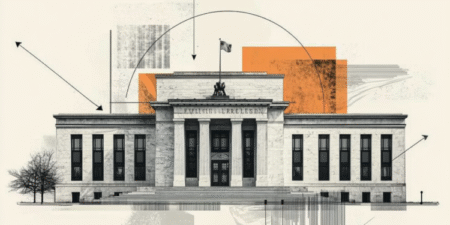- Australian Gross Domestic Product is forecast at 0.5% in the second quarter of 2025.
- The Reserve Bank of Australia reduced the Official Cash Rate to 3.60% in its August meeting.
- The Australian Dollar trades with a soft tone a handful of pips above the 0.6500 mark.
Australia will release its second-quarter (Q2) Gross Domestic Product (GDP) on Wednesday, with financial markets anticipating growth ahead of the announcement. The Australian Bureau of Statistics (ABS) is expected to report that the economy made modest progress in the three months to June 2025. The quarter-on-quarter (QoQ) GDP is foreseen at 0.5%, improving from the 0.2% posted in the previous quarter, while the annualised reading is foreseen at 1.6% after posting 1.3% in the first quarter of the year.
The Australian Dollar (AUD) heads into the release with a soft tone amid broad US Dollar (USD) demand, the latter triggered by a sell-off in United Kingdom (UK) government bonds. The yield on the 30-year note climbed to 5.66% in the European morning, its highest since 1998. The risk-averse environment weighs on the AUD and partially overshadows the impact of data releases.
What to expect from the Q2 GDP report
Australian growth picked up modestly at the end of 2024 and remained stable in the three months to March 2025, with the annualized GDP steady at 1.3% in the previous two quarters.
In the meantime, the Reserve Bank of Australia (RBA) contributed to economic progress by trimming the Official Cash Rate (OCR) in February 2025. It was the first rate cut in four years. Given that the central bank has been utterly cautious in lowering interest rates, the impact of this year’s decision is yet to be seen. The RBA has delivered three 25-basis-point (bps) rate cuts so far this year, the latest being in August.
Back then, policymakers noted that inflation had fallen substantially since the peak in 2022, “as higher interest rates have been working to bring aggregate demand and potential supply closer towards balance.” At the same time, however, the RBA downgraded its full-year GDP forecasts for 2025 to 1.7% from 2.1%.
The statement released by the Board also reads: “Uncertainty in the world economy remains elevated. There is a little more clarity on the scope and scale of US tariffs and policy responses in other countries, suggesting that more extreme outcomes are likely to be avoided.”
It is worth noting that the global trade environment has changed. Ahead of the August RBA meeting, United States (US) President Donald Trump’s tariffs came into effect. Australia faces a baseline 10% levy, which is not terribly disruptive but still a problem. Nevertheless, policymakers made it clear that the downward revision to the GDP forecast is owed more to a lower outlook for productivity growth, instead of trade disruptions.
In the current environment, market analysts expect another rate cut in November, the last one for this year.
How can the GDP report affect the Australian Dollar?
The Q2 GDP report will be released on Wednesday at 01:30 GMT. Ahead of the announcement, the AUD/USD pair battles to retain the 0.6500 threshold. The pair is sharply down on a daily basis, trimming half of the previous week’s gains.
Generally speaking, a better-than-anticipated GDP outcome would be positive for the AUD, while discouraging figures would put the currency under selling pressure. At this point, a growth acceleration below expectations would not affect the RBA’s monetary policy stance, meaning it should not affect the odds for future interest rate cuts.
Valeria Bednarik, Chief Analyst at FXStreet, notes: “The AUD/USD pair could gain extra-bearish traction once below the 0.6490 price zone, as the daily chart shows that buyers are aligned around a flat 20 Simple Moving Average (SMA), which is barely enough to contain the decline. The same time shows that technical indicators have rotated south, although they still hold within neutral levels. The next relevant support and a potential bearish target comes at the 100 SMA, currently at 0.6480. Further slides should see the pair extending its slide towards the 0.6430 region.”
Bednarik adds: “The AUD/USD pair would face initial resistance at 0.6535, Monday’s low, followed by the weekly peak at 0.6560. A clear break above the latter exposes the 0.6600 threshold.”
Australian Dollar FAQs
One of the most significant factors for the Australian Dollar (AUD) is the level of interest rates set by the Reserve Bank of Australia (RBA). Because Australia is a resource-rich country another key driver is the price of its biggest export, Iron Ore. The health of the Chinese economy, its largest trading partner, is a factor, as well as inflation in Australia, its growth rate and Trade Balance. Market sentiment – whether investors are taking on more risky assets (risk-on) or seeking safe-havens (risk-off) – is also a factor, with risk-on positive for AUD.
The Reserve Bank of Australia (RBA) influences the Australian Dollar (AUD) by setting the level of interest rates that Australian banks can lend to each other. This influences the level of interest rates in the economy as a whole. The main goal of the RBA is to maintain a stable inflation rate of 2-3% by adjusting interest rates up or down. Relatively high interest rates compared to other major central banks support the AUD, and the opposite for relatively low. The RBA can also use quantitative easing and tightening to influence credit conditions, with the former AUD-negative and the latter AUD-positive.
China is Australia’s largest trading partner so the health of the Chinese economy is a major influence on the value of the Australian Dollar (AUD). When the Chinese economy is doing well it purchases more raw materials, goods and services from Australia, lifting demand for the AUD, and pushing up its value. The opposite is the case when the Chinese economy is not growing as fast as expected. Positive or negative surprises in Chinese growth data, therefore, often have a direct impact on the Australian Dollar and its pairs.
Iron Ore is Australia’s largest export, accounting for $118 billion a year according to data from 2021, with China as its primary destination. The price of Iron Ore, therefore, can be a driver of the Australian Dollar. Generally, if the price of Iron Ore rises, AUD also goes up, as aggregate demand for the currency increases. The opposite is the case if the price of Iron Ore falls. Higher Iron Ore prices also tend to result in a greater likelihood of a positive Trade Balance for Australia, which is also positive of the AUD.
The Trade Balance, which is the difference between what a country earns from its exports versus what it pays for its imports, is another factor that can influence the value of the Australian Dollar. If Australia produces highly sought after exports, then its currency will gain in value purely from the surplus demand created from foreign buyers seeking to purchase its exports versus what it spends to purchase imports. Therefore, a positive net Trade Balance strengthens the AUD, with the opposite effect if the Trade Balance is negative.
Economic Indicator
RBA Meeting Minutes
The minutes of the Reserve Bank of Australia meetings are published two weeks after the interest rate decision. The minutes give a full account of the policy discussion, including differences of view. They also record the votes of the individual members of the Committee. Generally speaking, if the RBA is hawkish about the inflationary outlook for the economy, then the markets see a higher possibility of a rate increase, and that is positive for the AUD.
Read more.
Read the full article here
















